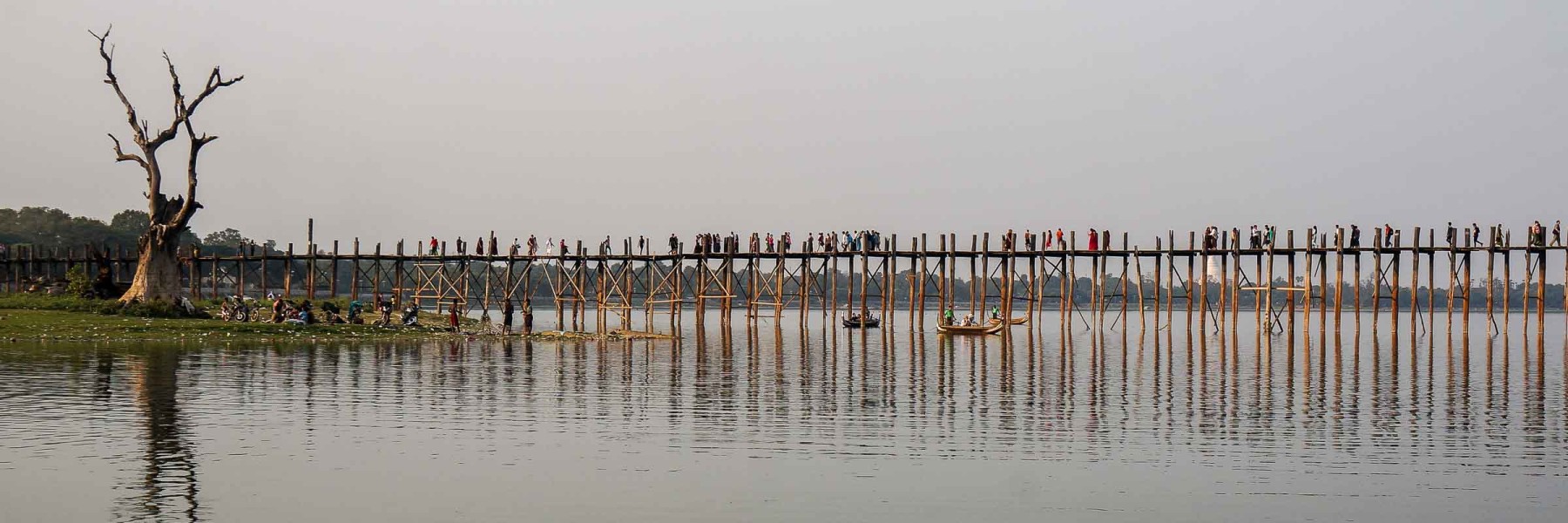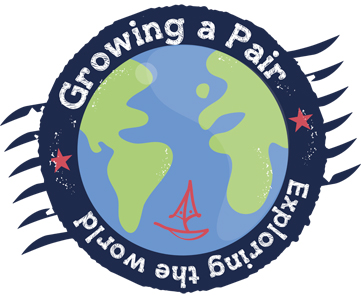
People Watching at U Bein Bridge. Mandalay, Myanmar.

Mandalay was very much a place we only visited as it sits between two places that we really wanted see. It’s a big place, which felt completely different from all of the other towns we’d seen in Myanmar. Way busier than even Yangon, massively bigger than Mawlamyine, and severely lacking in touristy stuff. Floss really thrived on the buzz of the place, but I wasn’t keen at all. We stayed at Hotel Nylon, which I think tells you everything you need to know about the place.
Our first day hadn’t been terribly successful, we’d tried and failed to visit both the old Royal Palace and Mandalay hill, and I’d picked up a stomach bug which completely knocked me flat for twenty four hours. We were determined that our second and last day in Mandalay would be more fruitful, and so marched purposefully out of Hotel Nylon and went in search of someone to take us to U Bein Bridge. True to form, we hired the first bloke we met and agreed to the price he offered. 20,000 kyats, which is just over a tenner seemed a fair price to pay to hire a man and his van for six hours. Life’s too short to haggle these days. Also true to form, the first place we stopped was at our driver’s mate’s house to pick up a travelling buddy to keep the driver occupied whist we were being tourists. All bases covered, we set off on the road to the Taung Tha Man Lake and the Amarapura village.
I was expecting it to take quite a while to get there, but after only forty bumpy and dusty minutes we’d arrived. We bundled out of the truck, took a photo of the truck’s number plate so that we could find it again, and surveyed the distinctly underwhelming scene laid out before us. The site is a major tourist attraction for foreigners and locals alike, and the bridge is surrounded by restaurants and stalls flogging all sorts of tourist tatt. And it’s properly busy. The bridge itself didn’t live up to my expectations of a grand wooden structure either. It is a series of many, many short spans that is clearly showing the effects of every one of the 165 years since it was built. At three quarters of a mile long, it’s certainly long, but I must say that I immediately thought that we’d be back in Mandalay within the hour, and our driver and his mate had pulled a blinder in selling us a six hour excursion.
Not wanting to rush into the white knuckle excitement of a walk along the bridge, we sat in one of the restaurants and had a cold drink. And here my feelings started to change. We’d arrived in the middle of the dry season, and the lake was about as low as it gets, the bridge was at least three metres above the water level. During the rainy season, the water level in the lake rises so the the bridge is only inches above the water. Where we were sat having a drink would be completely submerged in a couple of month’s time. I’ve no idea how this works, it seems like an incredibly hard way of running a business, but I suppose it matches what everyone does in Agonda. The romantically beautiful beach huts that we stayed in there are all dismantled before the monsoon season arrives and then rebuilt in time for the tourist season starting in the dry season.
Suitably refreshed, we set off to cross the bridge. It’s a pretty shakey old thing, with no consideration given to health and safety, but it gives you a great view of the lives of the people who get their livelihood from the lake. There were loads of blokes fishing, wading chest deep in the water with fishing nets. As they catch fish, they take them from the net and store them in their longhis (which are like sarongs, and worn by most of the blokes in Myanmar). Seeing them wade back out of the lake with 20 kilos of fish bulging out of their pants is a truley unique scene. The fish are rapidly handed over to the waiting wives and are either sold or cooked immediately.
On the shore of the lake, farmers are either growing a quick crop of lettuce before the rains come and submerge their plots (and their houses for that matter) or they’re farming ducks. The ducks live in large pens by the side of the lake, but are allowed out for a mid-afternoon swim and a wash. They’re then herded back into the pens before sunset, either by the farmer paddling a boat, or his kids swimming in the lake like a group of sheep dogs. Occasionally, one of them (ducks, not kids) breaks free of the pack and has to be collected. It’s a brilliant sport to watch with a cold beer, which is what we did. And that’s probably the most amazing thing about the bridge. Despite my feelings of disappointment when we arrived, we only just managed to get back to the van by the agreed time. Our time there just whizzed by. At the far end of the bridge we had some yummy spicy pancake things cooked on an open fire, and then strolled off and bumped into a school at closing time. Many photographs were taken and much larking about was done. We watched monks being tourists, local couples having a romantic stroll and families having picnics. All of Myanmar life is here, and if we ever find our way to Mandalay again, we’ll certainly be going back to U Bein Bridge, but this time, we’ll get there early and make sure we stay till well after sunset. It’s a bit of a crappy old bridge, but it’s a brilliantly cool place to visit. Loved it!

















It’s a v cool bridge… I like the bridge :o)